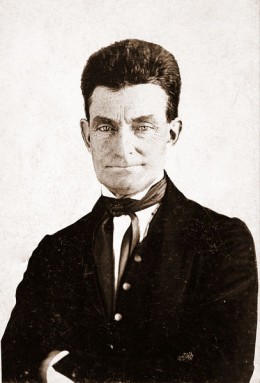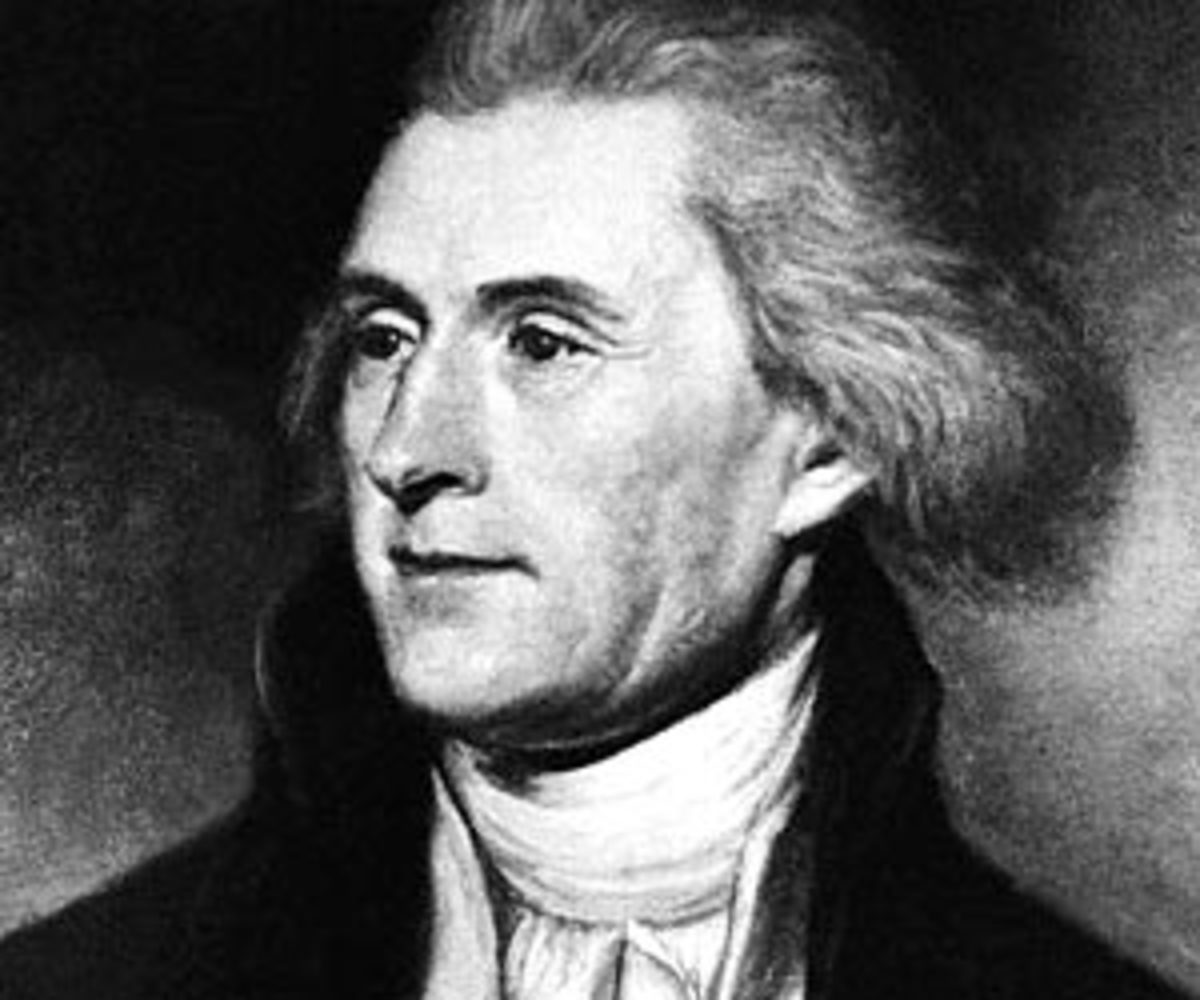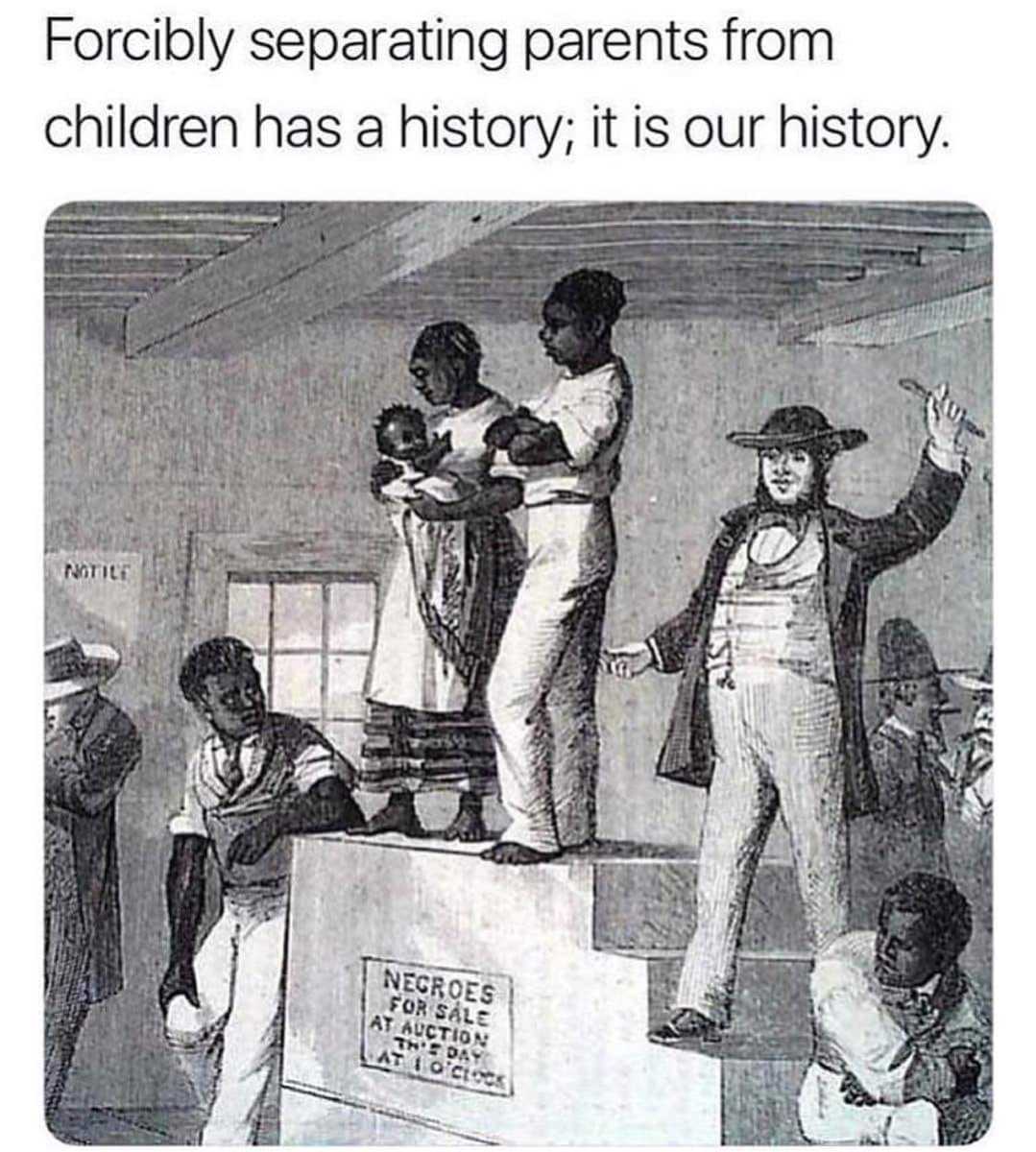The Assault on Harpers Ferry: A Look Into Civil War History

The attack on Harpers Ferry was considered a major factor that contributed to the Civil War. The abolitionist who led the attack was considered to be a man of god on a mission. His mission was to set free his Christian brothers, whom were enslaved by sinners. His religion and his witnessing the beating of an African American child by a slave holder led John Brown to go on the offense and attack slavery. John Brown, Abolitionist and John Brown’s War Against Slavery share mostly the same ideas about John Brown and his mission at Harpers Ferry, but there are a few ideas that also differ from each other.
In John Brown, Abolitionist, written by David S. Reynolds, John Brown was considered a very religious man, since his father, Owen Brown, had instilled his religious teachings into him. He was taught that slavery was wrong and that the “Golden Rule applied to people of all races” (Reynolds 33). As a child, John Brown had witnessed an African American child being beaten by his master. This incident had led him “‘to declare, or Swear: Eternal War with Slavery’” (Reynolds 33). Apparently, this was the primary motivation for Brown’s attack on slavery. There was no note of religion being a main reason to lead an attack on Harpers Ferry and at Pottawatomie as well, although it would be considered a very strong motive.
In John Brown’s War Against Slavery , written by Robert E. McGlone, it supports the fact that religion was not his prime motivation, along with a few other influences, to lead an attack on Harpers Ferry. “But that Brown was religious is in itself no explanation for his path to Harpers Ferry” (McGlone 7). This book mentions that his Puritan ancestry and his father, who was also an abolitionist, were what shaped his personality, even though very little of these issues are mentioned. “His Puritan ancestry and his abolitionist father are duly credited as early influences, but little is said of them or other kin…” (McGlone 23). These issues would also be considered as part of the driving force that led up to the events at and Pottawatomie and, more importantly, Harpers Ferry.
The two books agree upon the fact that John Brown was considered a “crazed fanatic who became a criminal when he supervised the murder of five men on Pottawatomie Creek…” (Reynolds 138). The (possible) cause for his murderous rage on Pottawatomie was, according to Reynolds, the beating of Senator Charles Sumner. Of course, another possible cause for his outrage was the sack on Lawrence. However, in McGlone’s book, it does not say that the murder was caused by the beating. He only struck out at the people in Pottawatomie because his family was in a dangerous situation. “At Pottawatomie, Brown struck in part out of a conviction of imminent danger to his clan (McGlone 75). This was a “family massacre” according to McGlone.
Reynolds regards the abolitionist as “an anomaly” because he believed in and acted with violence. “…he was an Abolitionist who believed in violence and who actually made war” (Reynolds 138). He was supposed to be a good Christian, but he acted on violence. He suggests that the abolitionist was following the Old Testament. In the Old Testament, god was an angry figure and used violence to punish sinners. “To be sure, the need for a demandingly pious vocation drove his antislavery zeal, and his belief that a just but wrathful God would punish a “guilty land” that tolerated slavery helped him justify his attack” (McGlone 7).
Christians and abolitionists of the antebellum time period were pacifists. They followed the New Testament, in which god was a peaceful figure and forgave those sinners. McGlone also agrees with Reynolds’ point of view of John Brown’s Christianity. According to McGlone, “It’s crucial to understanding who he was and how a professed Christian, living, as he often claimed, by the Golden Rule, could commit such an act” (McGlone 73). It is very clear that John Brown followed the Old Testament; otherwise he would have been one of those pacifist abolitionists.
John Brown would eventually conspire with Hugh Forbes on how to go about attacking Harpers Ferry in 1857. McGlone and Reynolds both agree that the two men had really different strategies. Brown believed that African Americans were capable of fighting against their masters and masterminding an uprising. “Brown’s plan was far riskier than Forbes’s not because Brown was foolhardy but because he was certain that blacks were capable of rising up, resisting capture, and forming a liberating army” (Reynolds 241). Forbes, on the other hand, doubted their abilities. “Forbes’s conservative plan grew from his doubts about the capabilities of blacks” (Reynolds 240). This, according to Reynolds, showed two racial views of the two men. Brown defended African Americans while Forbes looked down on them, a clear indication that he did not believe in equality for blacks.
McGlone agrees with Reynolds that the two men eventually dissolved their relationship. Reynolds explains why Forbes turned on Brown, which was for financial reasons. He wasn’t satisfied with the paltry salary that he had received. “It was not long before he learned that Forbes, disgruntled over the salary issue, had turned against him” (Reynolds 247). McGlone doesn’t explain the reason for the falling out but he does get into Forbes’s point of view, as does Reynolds, of the situation of freeing the slaves after defecting from Brown.
In order for Forbes to get the upper hand, he had to discredit Brown. According to Reynolds, he contacted various antislavery figures and Republican politicians, Senator Charles Sumner being one of those figures. In Reynolds’s account, he states that Forbes did not know who Brown’s financial backers were, thus he sent out numerous letters to his (Brown’s) supporters. “Unsure of who exactly was financing Brown, he spread his net wide, sending vituperative letters to Brown’s supporters and leading Republican politicians in Washington” (Reynolds 247). McGlone, on the other hand, wrote that he did know who they were. He wrote that “Forbes began telling Brown’s financial backers that Brown lacked the ‘the capacity to direct such an enterprise’…” (McGlone 235). It can be inferred that Forbes practically blackmailed Brown, since Brown later went into hiding.
In Reynolds’s account, he called Brown a ‘scoundrel’ for getting involved in a dangerous plan with “Eastern humanitarians.” “Forbes claimed that Brown was a scoundrel who had teamed with ‘Eastern humanitarians” (Reynolds 247). He was bound and determined to bring Brown down to his knees and to take all the credit for freeing the enslaved African Americans for himself. “Forbe’s plan, developed after hearing Brown’s, was premised on exploiting the penetrable borders between slavery and freedom. He proposed to launch a series of nighttime slave “stampedes” along the “northern slave frontier,” each designed to “carry off” twenty to fifty slaves” (McGlone 236).
This idea is not specified in Reynold’s book, although he agreed with McGlone on the man’s character. Forbes proved to be a very shady and dishonest character. “Forbes was a shadowy figured whom federal marshals, acting on behalf of the Senate committee, never found, but his published disclosures of Brown’s plan significantly affected the hearings” (McGlone 213). In other words, Forbes also did anything he could to save his own skin from prosecution after making himself look bad.
In McGlone’s book, Forbes claimed that Brown teamed up with a man named Amos Lawrence in order “to drive the price of cotton up and make a financial killing at the expense of the cause of freedom” (McGlone 235). Even though Reynolds does not mention any of this, he agrees with McGlone that Forbes discredited himself with false information. “Forbes’s cries for help, made to people who knew him slightly or not at all, had little effect other than to discredit himself” (Reynolds 248).
Reynolds gets into the specific problems at Harpers Ferry which had caused John Brown to fail miserably. The main problem, he states, was that the abolitionist was way too slow and indecisive. The mission should have been done with haste. “To this point Brown had moved swiftly and surely; after it he was slow and indecisive” (Reynolds 312). Secondly, the African Americans that Brown had set free were rather reluctant to go with him. “The response of the freedmen was mixed at best. By several reports, most were confused, and several actually feared that they were being captured to be sold south” (Reynolds 313). This development had definitely help cost Brown his own personal war against slavery. He did not count on having African Americans having very little knowledge on the use of weapons and, of course, having them think that he was there to kidnap them and sell them further down south. They did not expect a white man to be coming down to them and set them free. This proved that the South had gone through with keeping their slaves illiterate and unaware of what was happening. This made slave owners look like they were their own Gods.
Money was another issue that contributed to Brown’s downfall at Harpers Ferry. Had he gotten the money and man power, he would have succeeded. Instead he went in with a very small army, which was about twenty-one men, and on top of the aforementioned issues and was ultimately defeated. “None of them, not even Brown, knew what he was getting into. It turned out that of this initial group, six would be among the twenty-one men who raided Harpers Ferry two years later” (Reynolds 244). According to Reynolds, one man blamed himself for Brown’s inability to strategize fifty years after the fact. Strategizing, as it would appear was another factor in his defeat.
McGlone mentions that Brown had tried to equip his newly acquired army of former slaves, but nothing came of it. “Presumably Brown had hoped to equip his slave army with those weapons as well as the 950-iron-pointed pikes…” (McGlone 4). There is no note of the slaves being confused, but that could probably be inferred given that the attack on the arsenal happened afterwards.
The two authors definitely agree on the fact that John Brown survived his stab wounds, though his head wounds were not mentioned in McGlone’s account. Reynolds said that the one marine that had attacked the abolitionist had slashed Brown’s head several times. “Clutching the light sword with two hands, Green slashed Brown several times in the head, inflicting wounds” (Reynolds 327). He also mentioned that Green, in his hurry, didn’t pick up the correct weapon. He instead picked up a dress sword and not his military saber, which clearly explains why John Brown didn’t perish right away with his followers. “In the rush of leaving his quarters the previous day, Green had mistakenly brought a dress sword instead of his military saber. Also, he evidently struck a belt buckle or a bone, for the sword bent before piercing Brown deeply” (Reynolds 327).
According to Reynolds, the abolitionist was questioned by J.E.B Stuart, reporters and other politicians. It was an interrogation compared to McGlone’s so-called parleying before attacking the arsenal, in which John Brown was hiding and keeping his hostages. It is agreed between the two authors that the then-Colonel Robert E. Lee was there that day to help put the insurrection down. “At 11 p.m. a company of ninety marines commanded by Brevet Colonel Robert E. Lee arrived at Harpers Ferry” (Reynolds 336). John Brown knew that his crusade against slavery had come to an end when he was captured. He did say, in Reynolds’s book, that he did this as an instrument to God. “Bystander: ‘Do you consider yourself an instrument in the hands of Providence?” To which John Brown had answered positively. His actions actually helped dislodge the institution of slavery. The process was just sped up because of the war itself.
McGlone doesn’t think that John Brown was an ‘instrument’ for God. If that was true, then he would have been told to kill people and looked upon as a delusional old man. “But if Brown thought himself as God’s ‘instrument to free the slaves, no voices told him to kill and no one before the attack thought him delusional” (McGlone 74). In Reynolds’s book, it looked like he was on a mission for God since there was so much evidence proclaiming this, but once again it was said that the beating of an African American child was what led John Brown to go against slavery.
There were so many issues John Brown had to face and didn’t take into account when he went to invade Harpers Ferry. I feel that if he had a more solid plan on raiding Harpers Ferry, and not just running on religion, he would have succeeded. Unfortunately, he had also gotten involved with someone less than trustworthy, which added to the abolitionist’s problems. He didn’t think that his own follower would actually betray him. Of course, while he did have a strategy on attacking Harpers Ferry, it was probably haphazard at best. He didn’t take into account about how African Americans would feel that a white man had come to liberate them. Their slave owners had kept them ignorant and taught them to fear the outside world.
I personally feel that John Brown saw himself as an instrument for God, carrying out his will by punishing those in the wrong. If he wasn’t, he wouldn’t have killed five people at Pottawatomie. He was considered a terrorist who rationalized his killings. “First terrorists rationalize violence by putting it in the service of religious creeds, righteous ideologies, or national imperatives” (McGlone 137). That was how the South viewed him. John Brown was nothing more than a good-for-nothing terrorist. “Second, they try to compare their acts advantageously to allegedly more heinous acts or plots sponsored by an oppressive enemy” (McGlone 137). So, the South believed that John Brown was the actual villain and not themselves.
In my opinion, John Brown was a good man who simply wanted to help others in need. He was not a bad guy. He was just following what the God of the Old Testament that, he felt, would have done.
© 2014 writinglover2






